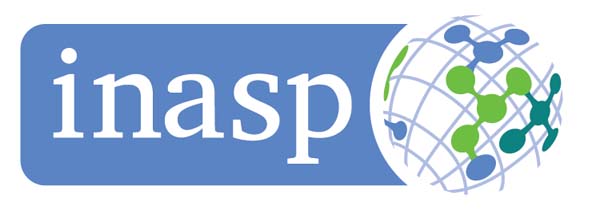Predicting Student Enrollment at the Education College of Benghazi via Mathematical Modeling Approaches
DOI:
https://doi.org/10.29304/jqcsm.2024.16.41803Keywords:
Mathematical Forecasting Model, Exponential Change Method, Logistic Method, Least Squares MethodAbstract
This study aims to demonstrate the process of three different models for predicting the number of undergraduate students enrolled at the Education College of Benghazi in a certain period. These models are Exponential change method, logistic method and the least squares method. Data was collected from registration and admissions office of the education college of Benghazi for the years 2015-2023. This data will be used to forecast for all methods that will be discussed in this research. For evaluating and comparing the efficiency and accuracy of these methods, Mean Absolute Deviation (MAD), Mean Absolute Percent Error (MAPE), and Root Mean Square Error (RMSE) were used. Enrollment data analysis allowed for the comparison of the models to the actual enrollment in regards to which method gave the best prediction of future student enrollment. The least squares method provided the most accurate estimations, with the precision rate of 92%. The three models were further used to predict enrollment levels for the Education College of Benghazi in the future semesters.
Downloads
References
. R. Albool, “Analytical Quantitative Study for Forecasting Methods of the Numbers of Students in Palestinian Schools”, The Eurasia Proceedings of Educational & Social Sciences (EPESS), No. 10, 39-51, 2018.
. R. S. Baker, P. S. Inventado and R. Rojas, “Educational data mining and learning analytics: An overview of the principles and practices”. Educational Technology & Society, 20(2), 3-9, 2017.
. A. Bosingwar and R. Puri,” Comparative Analysis of ARIMA and LSTM Models for Time Series Forecasting: A Case Study on Global Temperature Data”, International Journal of Scientific & Technology Research, 11(1), 145-150, 2022.
. H. Bousnguar, L. Najdi, & A. Battou, “Forecasting approaches in a higher education setting”, Education and Information Technologies, 27, 1993 – 2011, 2021.. https://doi.org/10.1007/s10639-021-10684-z
. H. Bousnguar, L. Najdi, & A. Battou, “Students’ Enrollment Forecasting Based on Deep Learning Algorithms and Statistical Approaches”, Springer nature, 211–219, 2022. https://doi.org/10.1007/9 78-3-030-90639-9_17
. T. Chapin and C. Diaz-Venegas, “Local Government Guide To Population Estimation and Projection Techniques”, Florida Department of Community Affairs, Florida State University, 2007. http://fpdl.coss.fsu.edu/content/download/75564/828103/file/Loca
. Y. Chen, R. Li, and L. Hagedorn, “Undergraduate International Student Enrollment Forecasting Model: An Application of Time Series Analysis”, journal of International Students 9(1), 242–261, 2019.
. J. Canada, R. Amorado, J. Sarmiento and P. Melo, “Machine Learning Estimation for Course Enrollment using Logistic Regression”, 2021 IEEE 9th Conference on Systems, Process and Control (ICSPC 2021), 123 128, 2021. https://doi.org/10.1109/ICSPC53359.2021.9689192 .
. C. Dym, “What Is Mathematical Modeling”, 3-12, 2004. https://doi.org/10.1016/B978-012226551-8/50002-8.
. M. Egbo and D. Bartholomew, “Forecasting Students’ Enrollment Using Neural Networks and Ordinary Least Squares Regression Models”, Journal of Advanced Statistics, 3(4), 2018. https://doi.org/10.22606/jas.2018.34001
. M. Feng, Y. He and Y. Wang, “Predicting student enrollment in higher education institutions with data mining techniques”, International Journal of Information and Education Technology, 4(5), 433-438, 2014.
. G. Firanda and R. Rosnelly, “The application of the triple exponential smoothing method in the prediction of warehouse inventory”, Jurnal Informatika Kaputama (JIK), 2023. https://doi.org/10.59697/jik.v7i1.6
. D. Gawatre, M. Kandgule, and S. Kharat, “Comparative Study of Population Forecasting Methods”, IOSR Journal of Mechanical and Civil Engineering, 13(4), 16-19, 2016.
. L. He and Z. Jin,” The Population Predicting Based on the Curve Fitting Least Square Method”, 2015. https://doi.org/10.2991/amcce-15.2015.258
. L. A. Helbling, U. Moser and M. J. Tomasik, “Putting an Explanatory Understanding into a Predictive Perspective: An Exemplary Study on School Track Enrollment”, Frontiers in Education, 6, 2022. https://doi.org/10.3389/feduc.2021.793447
. Herimanto, A. S. Dharma, H. Manurung and A. B. Nababan, “Comparison of Support Vector Regression and Artificial Neural Network Algorithm in Predicting the Number of Prospective Student Registrans”, IEEE International Conference on Data and Software Engineering (ICoDSE), Toba, Indonesia, pp. 43-48, 2023.https://doi.org/10.1109/ICoDSE59534.2023.10291384
. A. Hinde, “Demographic Methods”, Routledge, Taylor and Francis group, New York, 2014.
. G. James, D. Witten, T. Hastiem and R. Tibshiranim, “An Introduction to Statistical Learning with Applications in R”, Springer, 2013 . http://www.springer.com/series/417
. Z. Jianjun, X. Yuanbiao and F. Renhai,” Network Traffic Forecasting Based on Logistic Iterative Regression Model”. 27, 424–429, 2020. https://doi.org/10.1109/icicsp50920.2020.9232022
. M. Gerasimovic, U. Bugaric and M. Bozic, “Enrollment management: Development of prediction model based on logistic regression”, FME Transactions, 44, 92- 98, 2016. https://doi.org/10.5937/FMET1601092G .
. N. Ghani, Z. Cob, S. Drus and H. Sulaiman, “Student Enrolment Prediction Model in Higher Education Institution: A Data Mining Approach”, Lecture Notes in Electrical Engineering, 2018. https://doi.org/10.1007/978-3-030-20717-5_6 .
. D. Lang, A. Wang, N. Dalal, A. Paepcke and M. Stevens, “Forecasting Undergraduate Majors: A Natural Language Approach”, AERA Open, 8, 2022. https://doi.org/10.1177/23328584221126516
. C. Li, “Application of the logistic model in ICM”. 2066(1) 2019. https://doi.org/10.1063/1.5089071
. J. Lowe, M. Carter and T. Cooper,” Mathematical Modelling in the Junior Secondary Years: An Approach Incorporating Mathematical Technology”, The Australian mathematics teacher, 1 (74), 4-12, 2018.
. J. C. O. Mamaril and M. A. Ballera, “Multiple educational data mining approaches to discover patterns in university admissions for program prediction”, International Journal of Informatics and Communication Technology (IJ-ICT), 11(1), 45, 2022. https://doi.org/10.11591/ijict.v11i1.pp45-56 .
. N. Marpaung, R. Amri, E. Ervianto and K. Salim, “ Application of Single Exponential Smoothing in Forecasting Number of New Students Acceptance” ,5, 169-182, 2019. https://doi.org/10.20469/ijtes.5.10001-6 .
. H. Negara, M. Ibrahim and K. Kurniawati, “Mathematical Model of Growth in The Number of Students in NTB Using Newton-Gregory Polynomial Method”, Jurnal Varian, 4(1), 43-50, 2020. https://journal.universitasbumigora.ac.id/index.php/Varian
. A. Nuryaman, M. A. A. F. Pamungkas and S. Saidi, “Forecasting of Bandar Lampung’s Population Using Growth Mathematical Models”, Journal of Physics: Conference Series, 1338(1), 012037, 2019. https://doi.org/10.1088/1742-6596/1338/1/012037
. V. Pajankar and S. Srivastava, “An approach of estimating school enrolment with Reconstructive Cohort Approach”, Journal of Physics Conference Series, 1366(1), 2019.
. N. Patanarapeelert and K. Patanarapeelert, “Forecasting Number of Students in University Department: Modeling Approach”, Open Journal of Applied Sciences, 3, 293-297, 2013. https://doi:10.4236/ojapps.2013.34037 (http://www.scirp.org/journal/ojapps)
. C. Pilarca, D. Opiña, J. Leuterio , F. Toledo, M. Bellones, R. Gerona and J. Sermeno,“Development of an Academic Performance Monitoring System Using Least Squares Regression for Predicting Student Academic Performance Status on Professional Courses”. Journal of Innovative Technology Convergence, vol. 5, no. 1, June 2023. https://doi.org/10.69478/JITC2023v5n1a05
. P, P.” Forecasting student enrollment using Long Short-Term Memory (LSTM) model”, Applied Mathematics and Computation, 270, 125-133, 2020.
. I. Rakhimov and M. Kankarej, “Forecasting the number of students in general education in university college using mathematical modelling”, Journal of Mathematical Sciences: Advances and Applications, 32, 57-71, 2015.
. F.A. Rufai, O. Folorunso and O.L. Usman, “Predicting students’ enrollment using generalized feed-forward neural network”, J. Nat. Sci. Engr. & Tech. 2015, 14(1): 58–70, 2015.
. R. M. Sabanal, “Senior High School Student Enrollment Forecasting Model: An Application of Time Series Analysis”, 2023. https://doi.org/10.55248/gengpi.4.923.52729.
. Y. Utami, D. Vinsensia, A. Nissa and S. Sulastri, “Forecasting the Sum of New College Students with Linear Regression Approach”, Jurnal Teknik Informatika C.I.T Medicom. 14, 10-15, 2022. https://doi.org/10.35335/cit.vol14.2022.231
. R. Waliyansyah and N. Saputro, “Forecasting New Student Candidates Using the Random Forest Method”, Lontar Komputer : Jurnal Ilmiah Teknologi Informasi, 2020. https://doi.org/10.24843/lkjiti.2020.v11.i01.p05.
. H. Wang, H.Wang, J. Guo, and H. Feng, “A Fuzzy Time Series Forecasting Model Based on Yearly Difference of the Student Enrollment Number”, proceedings of the 2nd International Conference on Soft Computing in Information Communication Technology, Atlantis Press, 172-175, 2014. https://doi.org/10.2991/scict-14.2014.41
. L. Yang, L. Feng, L. Zhang and L. Tian, “Predicting freshmen enrollment based on machine learning”, The Journal of Supercomputing, 77, 11853 – 11865, 2021. https://doi.org/10.1007/s11227-021-03763-y
. S. Yang, H. Chen, W. Chen and C. Yang, “Student Enrollment and Teacher Statistics Forecasting Based on Time-Series Analysis”, Hindawi, Computational Intelligence and Neuroscience 2020. https://doi.org/10.1155/2020/1246920
. Y. Yoon and J. Kim, “The model of the weighted proportion estimation for forecasting the number of population”, 24, 311-320, 2013.https://doi.org/10.7465/JKDI.2013.24.2.311
. J. Wu, M. Lin and C. Tsai, “A Predictive Model That Aligns Admission Offers with Student Enrollment Probability”, Education Sciences, 2023. https://doi.org/10.3390/educsci13050440 .
Y. Zhao and A. Otteson, “A Practice in Enrollment Prediction with Markov Chain Models”, Eastern Michigan University, USA, arXiv: 2405.14007v1, 2024.
Downloads
Published
How to Cite
Issue
Section
License
Copyright (c) 2024 Fatma Naser Ali Mohamed, Bothaina Bukhatwa

This work is licensed under a Creative Commons Attribution-NonCommercial-NoDerivatives 4.0 International License.













